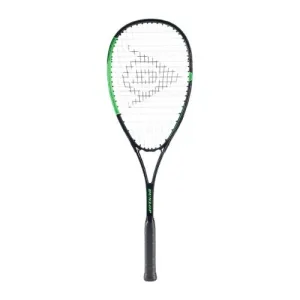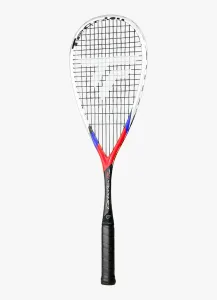Beginner Rackets
Beginner Squash Rackets: How to Choose Your First One
Starting squash is exciting – but walking into a sports store (or browsing online) and seeing dozens of rackets with all kinds of shapes, weights, and price tags can feel overwhelming. Don’t worry – choosing your first squash racket doesn’t need to be complicated.
Below, I’ll walk you through the key steps and processes to choose your first racket and then share a few beginner-friendly models I personally recommend.
Step 1: Decide on Your Budget
For beginners, you don’t need to spend a fortune.
Entry-level rackets (around $40–$80) are more than enough to start with.
Avoid the very cheapest unbranded rackets – they can be heavy and badly balanced, which makes learning harder.
From my own experience, spending a little extra for a reputable brand made a big difference in comfort and confidence.
Step 2: Understand Weight and Balance
Lightweight rackets (110g–135g): Easier to maneuver, faster swing, but require better technique.
Heavier rackets (140g–170g): More forgiving and powerful for beginners since the racket does a lot of the work.
My advice:
If you’re just starting out, aim for a mid-weight racket (around 140g). This gives a good balance of power and control without being too demanding on your wrist.
Step 3: Grip Comfort and Feel
When you pick up a racket, it should feel natural in your hand.
Many beginners overlook grip comfort, but a comfortable grip reduces wrist strain and improves accuracy.
Don’t be afraid to re-grip your racket with an overgrip for extra comfort – I always do this with new rackets.
Step 4: Shape: Teardrop vs. Classic Head
Teardrop-shaped rackets: Larger sweet spot, more power, slightly more forgiving.
Classic-shaped rackets: More control, but less forgiving.
For beginners, teardrop is the way to go – it’s just more fun and rewarding when you hit the ball solidly.
Step 5: Durability Matters
Beginners tend to hit walls (a lot!).
Look for a frame with a bit more durability rather than something ultra-light and fragile.
A sturdy racket will survive the learning curve.
My Top Beginner Squash Racket Recommendations
These are rackets I’ve used, seen others enjoy, or often recommend to newcomers:
1. Dunlop Blaze Inferno
Weight: ~170g (with strings)
Why it’s great: Affordable, solid, and perfect for someone just starting out.
My experience: I used a Blaze series racket for my first 6 months – it was a tank and helped me focus on technique rather than worrying about breaking it.

2. Tecnifibre Carboflex X-Speed 130 (or 135)
Weight: 130–135g
Why it’s great: A bit more advanced, but still very forgiving. The teardrop shape gives a nice mix of power and control.
Opinion: If you think you’ll play regularly, this is an excellent first investment.

3. HEAD Nano Ti 110 or 115
Weight: 110–115g (feels light)
Why it’s great: Lightweight but still beginner-friendly, thanks to its forgiving head.
My note: This one is fun if you prefer a lighter feel – just be mindful that very light rackets can punish poor technique.

My Personal Journey Choosing a First Racket
When I started squash, I picked a racket purely based on looks (mistake!). It turned out to be too light and stiff, which made me tense up my arm. After a few weeks, I switched to a slightly heavier, balanced racket, and it changed everything. My shots had more control, and I stopped worrying about breaking it every time I mishit.
So, my advice: don’t overthink it, but don’t just pick the flashiest option either.
Final Tips Before You Buy
Try before you buy: If possible, borrow or rent a racket at your club to feel the difference.
Protect your investment: Get a basic racket bag and overgrip – these small extras keep your racket in good shape.
Don’t obsess over brand or pro endorsement: At beginner level, comfort and confidence matter far more than tech specs.
Ready to Start Playing?
A good beginner racket should feel solid, help you enjoy the game, and survive a few wall clashes. Choose one in your budget, look after it, and you’ll be ready to fall in love with squash.
